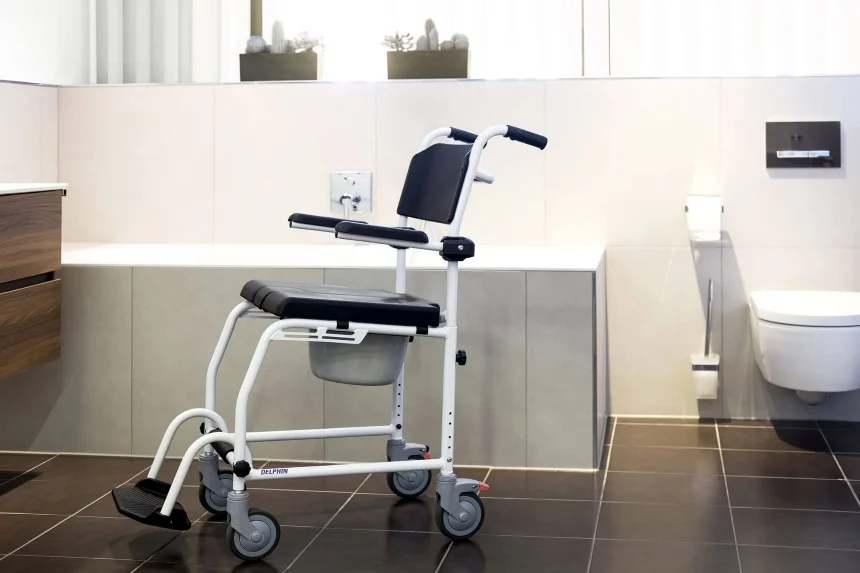
Would you like to know how to bathe someone in a wheelchair? As awkward as it may seem, helping a person with a disability (PwD) (who can be a person with long-term physical, intellectual, mental, or sensory impairments) is essential considering how physically and emotionally challenging this activity can be for them.
If they can get in and out of bed, eat, and get around in their wheelchair, the bathroom – especially to shower – isn’t a place or activity you should leave them to do or go. A bathroom is a place we are most likely to fall in than any other place, even for people without disabilities.
Seniors suffer as much as 80% of fall-related injuries in the bathroom. So, it’s strictly recommended to assist them in bathing or supervise them while they bathe. But how does a person in a wheelchair take a shower, or how do you help them bathe? In this article, we’ll see everything you need and the steps to take to make it happen.
For the elderly or PWD in a wheelchair, there is a severe risk of accidents and injuries if they try to help themselves to this activity.
A bathroom is a dangerous place for seniors and people with disabilities. Eighty percent of falls at home occur here, and according to the CDC, 80% of fall-related injuries in the bathroom are suffered by seniors.
A 2002 study published by the NCBI shows that 38% of wheelchair users fall at least once a year, and 17.7% of them suffer an injury.
Never leave a person with a disability to take a shower without being assisted or at least supervised.
Straight to it, we will see the procedure for taking a senior or anyone with disabilities to the bathroom in their wheelchair. First, we will outline what you need to do before starting and the products to accomplish this.
The bathroom must be set up for disabled people to wash themselves, even without someone’s help.

Installing a bathtub for the disabled is essential to make the moment of personal hygiene safe and easy. They are designed with a side door, seat, and support handles to allow easy access to the tub, even when moving indirectly with the wheelchair.
The tubs with motorized seats allow you to reach the bottom of the tub and get back up effortlessly by virtue of an automated system. They are customizable thanks to the possibility of adding extra accessories. These tubs also adapt to the dimensions available in the bathroom and allow the caregiver put in little effort while the bather carries on in complete safety.
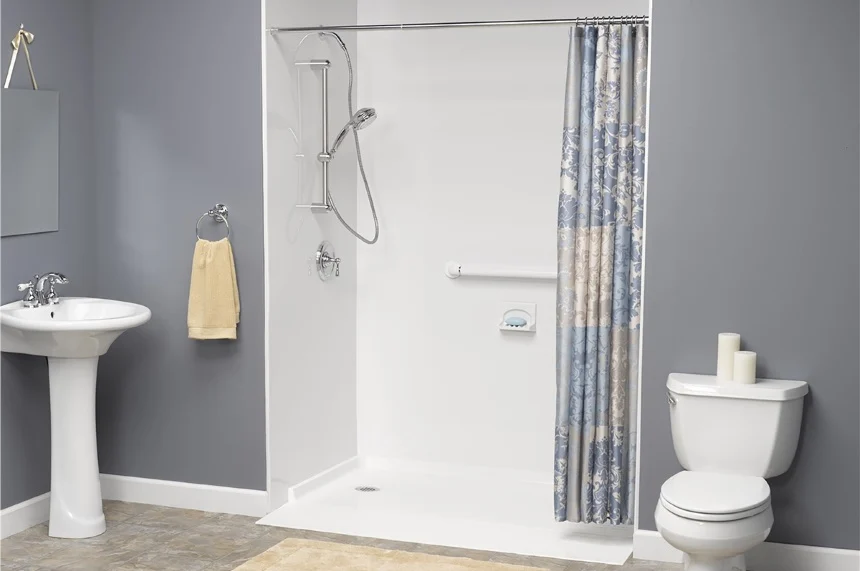
Alternatively, you can opt for showers designed for the elderly and disabled. There are models designed to allow access even directly with the wheelchair. The shower enclosures for the disabled are of various sizes, with external openings, and can adapt to any structural need of the bathroom.
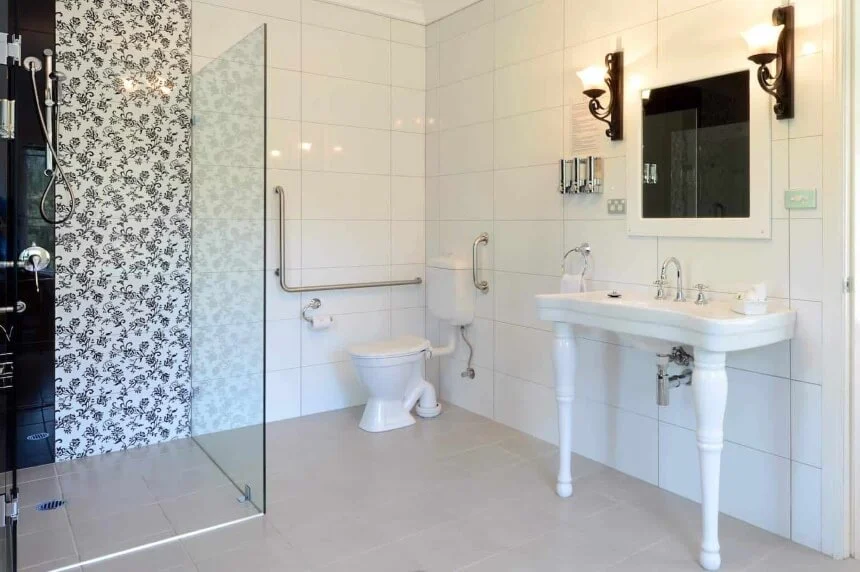
It is essential to get to the bath or shower safely, so removing anything that can cause a fall or slip is necessary. Examples are carpets that can make you skid your steps or hinder the smooth movement of the wheelchair. Ensure you have non-slip flooring.
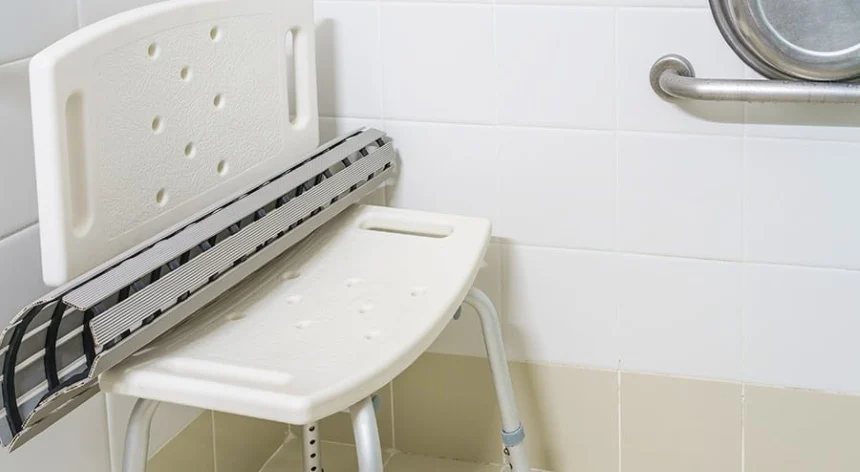
It’s almost impossible to bathe someone in a wheelchair. So it’s advisable to purchase a shower chair. The shower chair must have anti-skid feet. Alternatively, you can use a transfer board or transfer bench. These allow the user to slide into the bathtub and then use the shower or a handheld shower.
Additionally, you will need an anti-skid bath mat placed just at the bathroom or tub entrance to prevent slipping.
Get all the regular shower accessories and products such as shower caps, soap, shampoo, conditioner, and towel ready, and you’re good to go.
Below are steps to follow to shower a person in a wheelchair:
If you’re using a transfer bench, place it in the tub.
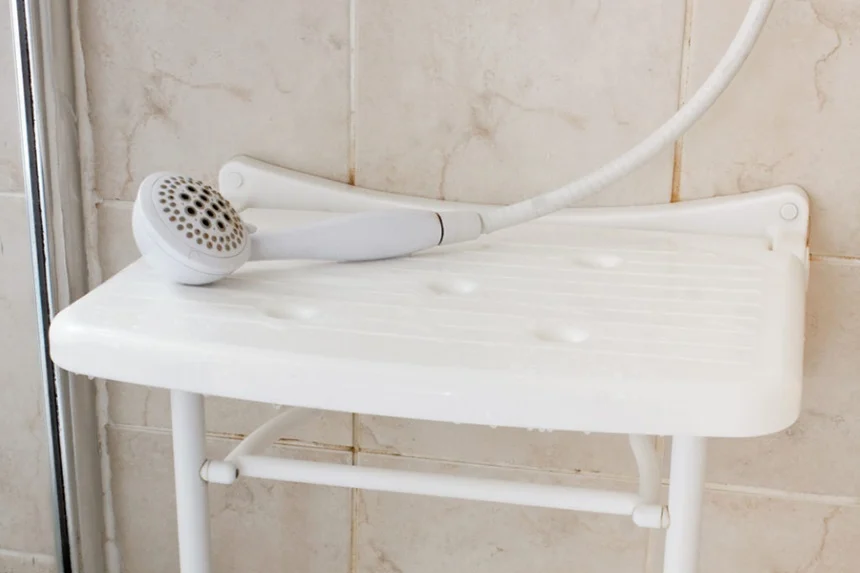
White Plastic shower seat used by the elderly and disabled to aid them by allowing them to sit and wash often reccommended by occupational therapists
Bed-bathing is another option you may want to consider if you don’t have a bathroom designed for wheelchair access or if the process will be tedious for you or the person.
In addition, if a person in need of care can no longer get up for personal hygiene due to their illness, bathing in bed is often the only option.
In the video below, you’ll find out all the items needed, the steps to be taken, and other tips to carry out a bed bath/
So, you’ve seen how to bathe someone in a wheelchair – not exactly in a wheelchair, but by transferring them from a wheelchair to the bathtub chair and vice versa after bath.
Above all, when you have a dependent family member, it is necessary to help them get to the bathroom and avoid possible risks that could harm them. In some cases, it is recommended to adapt the bathroom to the needs of the disabled person.
To make bathing for the disabled easier, it’s helpful to have a technical aid such as a bath or shower chair. They are made of water-resistant metal and plastic materials. You only need to transfer the bather from the wheelchair to the shower chair, bathe them or let them wash up under your supervision.